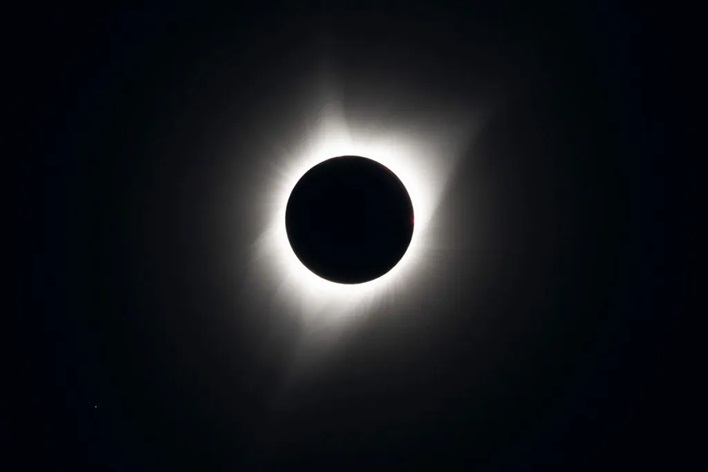Photography Expert Reveals How To Capture A Solar Eclipse With Stunning Results
Stan Honda, who has worked 34 years as a photojournalist, will be in Fredericksburg, Texas with friends on April 8, 2024 during the total solar eclipse. His plans are to capture images of the event on behalf of the international news agency, Agence France-Presse. The seasoned photojournalist, who also captured images from the September 11, 2001 attacks on the World Trade Center, has offered up some tips and techniques to help everyone take images of the upcoming event with only a digital camera and ordinary lenses.
Honda remarked that the first step in taking images of the event is to plan ahead. He recommends utilizing the TimeAndDate website, which has great maps and information on the event, to find the ideal location. Another aspect of planning ahead, according to Honda, is to simplify your approach by choosing just one camera and lens for capturing the event. This will allow the photographer to not only focus on capturing a remarkable image, but also allow them to fully take in the celestial event themselves.
Perhaps the most important part of viewing the eclipse is to ensure eye safety. Everyone will want to pick up a pair of eclipse glasses that have the ISO 12312-2 standard written on the side. Honda explains, “Safe filters block out a huge percentage of visible light and most importantly the UVs and UVb rays that can cause permanent retina damage and infrared radiation.”
Another important step in planning ahead is to buy a lens filter for the chosen camera lens for taking photographs of the partial phase of the eclipse. Honda recommends checking out brands Baader, Celestron, and Thousand Oaks Optical. He adds that Baader and Thousand Oaks Optical also offer small solar filter sheets that can be cut to fit a lens, and are relatively inexpensive.
For camera choice, Honda says any DSLR or mirrorless camera will allow for taking good eclipse photos. Lens choice will be the determining factor in what kind of image is wanted, with a telephoto lens being the most popular for capturing a shot of the sun and corona. Long telephoto lenses, like a 100-400mm, or 200-600mm, will give a larger image of the eclipsed sun, but are bulkier and harder to manipulate. A wide angle lens, or the kit lens the camera came with, can produce a dramatic shot of the surrounding environment and the eclipse.

A few photography tips Honda shared include knowing the camera being used. Practice taking shots with the camera in the days and weeks ahead of the event. Become familiar with the various settings, such as focus, exposure, and the spot meter mode. Practicing will also give photographers a good idea of how long their battery will last.
For taking pictures of the eclipse, Honda remarked, “A good starting point for the camera settings is: ISO 400, 1/1000 second, f8.” He added, “You may have to adjust this to fit the conditions in the sky as well as your equipment.” During the total eclipse, and when the moon is almost covering the sun and there is a sliver of the sun through the filter, Ford remarked, “Filters off!”

Anyone wanting more information about Stan Honda, or his advice on taking total solar eclipse images, can visit his website. As Honda poignantly points out, don’t get lost in the moment of taking photographs, and be sure to take in the full experience.


